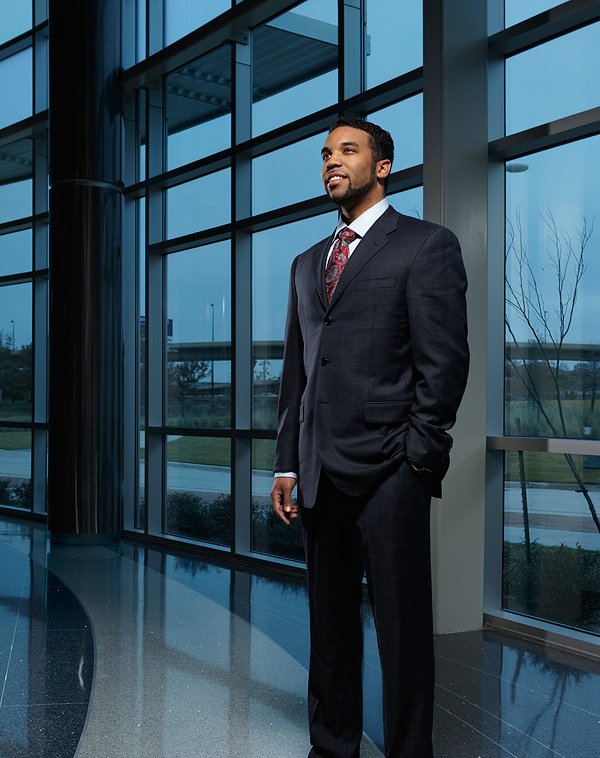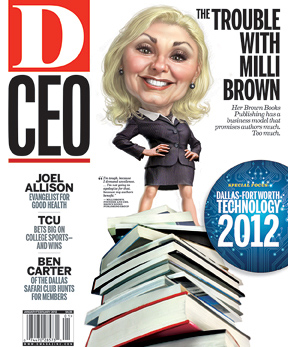Since its launch in August 2008, the Neal Richards Group has developed half-a-billion-dollars worth of healthcare real estate. It has another $500 million in the pipeline. And, says CEO Derrick Evers, “you can probably put an ‘x’ by that number, because it will multiply, based on ancillary growth.”
When the company kicked off its first physician-owned project, Forest Park Medical Center, it had just a handful of doctors on board. Today, a scant three years later, it has more than 400. Along with its flagship location on North Central Expressway at Forest Lane, NRG has hospitals under construction in Frisco Square (opening May 2012 and incorporating medical office and traditional retail space), Southlake (opening the first quarter of 2013 near Southlake Town Center), San Antonio (a 50-acre masterplanned development with healthcare, office, hotel, and retail), Fort Worth, and Austin. It’s also seeking sites in six additional markets, some of which are out of state.
Despite the economic recession, NRG has quickly become a powerful development force. It’s the latest in a string of career achievements for Evers, who’s just 34 years old.
Growing up in Detroit, Evers says he always knew he wanted to work in real estate. He’d spend a lot of time drawing homes and commercial structures and building things with Legos. He’d show his mother his drawings and say, “I’m going to build this someday.” “I know you will, son,” she’d answer. “I can’t wait to see what you build.”
The oldest of four children (he has three younger sisters), Evers attended Cass Tech High Shool in downtown Detroit, one of the city’s few magnet schools. “I’d take a city bus, 45 minutes a day, going straight down Grand River, pushing over the winos and what not, just to get to school,” Evers recalls.
When he told his father that he wanted to attend either Florida State or Texas A&M, both top construction science schools, his dad said,
“Words are powerful. If you say it, and you mean it, then anything can happen,”
Today Detroit is a skeleton of its former self; back then, things were already getting dicey. When Evers was 16 years old, one of his friends was shot right next to him in a random drive by. The friend survived, but the traumatic event convinced his mother and father—both of whom had good jobs, working for Chrysler and Prudential, respectively—to pack up and move to Texas. His mother had a brother in Fort Worth, so they knew they could bunk with family until they found work and got back on their feet.
“My parents are my biggest heroes,” Evers says. “They put their children above their careers and everything else. It took them years to recover.”
Evers finished high school at Euless Trinity, where he was a point guard for the school’s basketball team. He then enrolled at Texas A&M, where he also played ball. His childhood dream of attending A&M was solidified during a pre-enrollment visit to the campus with his parents. “Driving down Highway 6, you go through some really small towns,” Evers says. “I’m just a kid from Detroit and I’m thinking, ‘Where the heck am I?’ It was nighttime, pitch black out, and we got a flat tire. My father is not a mechanically inclined person. So we’re by the side of the road and this old pickup truck pulls up beside us. I didn’t know what was going to happen next. But a guy gets out and says, in a thick Texas accent, ‘You look like you need some help.’ We told him we were on our way to A&M for our first college visit. He changed the tire for us, and my father tried to give him some money. The guy showed us his Aggie ring and said, ‘Don’t worry about it; Aggies take care of Aggies.” Right there I thought, “I don’t care what the campus looks like; I’m going to A&M.”
Breaking Down Barriers
Not many African Americans attend the school (A&M currently has a black population of less than 3 percent); even fewer are in the College of Architecture’s construction science program. Evers overcame occasional pushbacks and persevered, always trying to work harder or make himself stand out. As a senior, he signed up for 11 interviews during a job fair—and got 11 job offers. Some of the companies wrote letters to his parents. “These were the big boys in construction—Turner, Rogers O’Brien, Manhattan, Austin Commercial, all the great companies,” Evers says. “I felt like a star football player getting recruited. It was awesome.”
He didn’t take the highest offer; instead, he went with the firm he clicked with most: Whiting-Turner Contracting Co., serving as a project engineer in Dallas on a wide variety of commercial projects. “I loved hanging out in the job trailer with the crotchety old superintendents,” Evers says. “I had to cross those initial barriers; there were a lot of things working against me. Many are old-school country guys. They’d see me walk through the door and not know what to think. I took the approach of earning their respect, by working very hard. I knew I needed to learn from them the things that aren’t taught in schools. [The superintendents] appreciated this, and I became one of them. They had my back like nobody’s business.”
A few years later, in the early 2000s, a desire to understand the entire development process—not just the construction piece—compelled Evers to pursue opportunities at Trammell Crow. As a development manager in Dallas, he worked on the Sprint account, managing about 50 projects for the company, then moved on to mixed-use, retail, office, and healthcare, overseeing projects like Baylor Heart Hospital in Plano and Baylor Garland.
Then one day in 2005, Evers got a call from Roger Staubach. “When I met with him the next day, Roger told me he had 15 minutes, then he wanted me to meet with a few other people. An hour later, we were still talking. He said, ‘Derrick, don’t worry about meeting with anyone else.’ Then he grabbed a football, signed it, handed it to me and said, ‘Welcome to the team.’ I didn’t even know I was interviewing.”
Built Around “the Physician Chassis”
Evers worked in development at The Staubach Co. for several years, overseeing office, industrial, and a lot of healthcare projects. One was the initial planning for Forest Park Medical Center, a project led by Dr. Richard Toussaint and Dr. Wade Barker. The physicians wanted to develop their own hospital, one that was “built around the physician chassis” and focused on the patient experience. Evers said he instantly “got” the vision.
Around the same time, The Staubach Co. struck a deal to merge with Jones Lang LaSalle. Toussaint asked Evers how this would affect him. “I said, ‘Don’t worry, you won’t see any drop in service; it’s just a business-card change.’ Dr. Toussaint said, ‘You’re not listening. How is this going to affect you?’ I was a little caught off guard.” Toussaint then said he and Barker wanted to form their own real estate development company and have Evers, who was just 30 years old at the time, serve as CEO. “He told me, ‘You’re young, but you’re hungry and aggressive, and you’re a lot older than your years indicate.’ ”
Evers thought about how his parents took a bold risk by packing up and moving to Texas all those years ago. He got strong encouragement from his wife, Monica, and from Staubach, who said he could always come back if it didn’t work out. That was all Evers needed to hear, and in August 2008, Neal Richards Group was formed. (The moniker is a combination of Barker’s middle name, Neal, and Toussaint’s first name, Richard.)
Before long, two more physicians joined the venture, Dr. David Genecov and Dr. Robert Wyatt, and plans for Forest Park Medical Center began to move forward.
The original concept was for Neal Richards Group to be a project management company. But just a month or two after the company was formed, the economy tanked. “We went to other firms to try to have them raise our equity and find our debt with lenders or lease our buildings, and everyone said they couldn’t get it done,” Evers says. “We got every ‘no.’ So we decided to vertically integrate our company—not because we wanted to, but because we had to. It was in keeping with our mantra of, ‘We just don’t fail.’
“We raised our own equity, mostly from high-net-worth individuals, found debt, formed an affiliate called NRG Brokerage, and a hospital operations group called Vibrant Healthcare.” (The partners, including Evers, later added glendonTodd, a private equity firm, which has done four deals and is on the verge of closing two more, including one in Brazil. It’s led by Todd Furniss. They also invested in Lascaux Films, an independent film company led by former WFAA-TV movie critic Gary Cogill.)
The first phase of the sprawling Forest Park Medical Center opened in 2009. Within six weeks, it was operating at capacity. The hospital “breaks every mold of conventional healthcare delivery,” Evers says. “Most hospitals shut down their operating rooms at 3 p.m. We do surgeries as late as 9 p.m. We do them on Saturdays, Sundays if needed. This happens nowhere else.”
Current healthcare reform initiatives prevent physicians from having an ownership stake in medical centers that accept Medicare or Medicaid. This doesn’t affect NRG hospitals, which cater to physicans who perform scheduled, controlled surgical procedures, everything from bariatric to spine surgeries.
Other medical centers are often situated “on the back parcel of a back parcel,” Evers says. NRG targets high-profile locations that showcase the doctors and the hospitals’ hotel-like designs. The company is expanding the healthcare concept by incorporating retail, office, and hotel elements into its most recent projects. “Our idea is, let’s replace the typical mixed-use catalyst with a health care engine,” Evers says. “We’re building campuses now, instead of facilities.”
NRG doesn’t have any real competitors, he says, because there aren’t other real estate companies whose leadership is so strongly comprised of doctors. “They are intimately involved in how the hospitals are built, run, procured—every facet,” Evers says of his physician partners. “That is a huge strategic advantage.”
The CEO says he’s grateful to have such visionary partners, especially Toussaint, and remarkable real estate mentors. While at Trammell Crow, Evers caught the attention of president and CEO Bob Sulentic, who took him on as a mentee. (Sulentic is now global president of CB Richard Ellis.) “He helped shepherd me down the path of how to conduct business and how to lead people,” Evers says. “And at Staubach, Roger talked so much about integrity. I’ve been able to take the best of these amazing leaders and organizations and develop my own style. I have been very blessed.”






